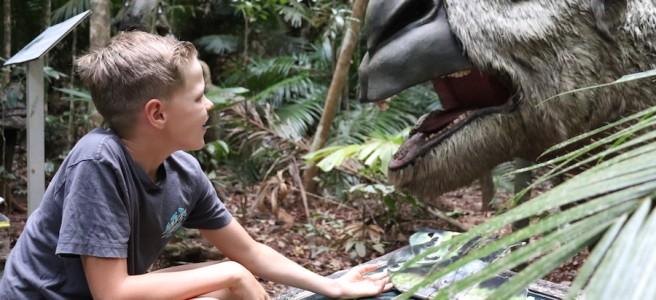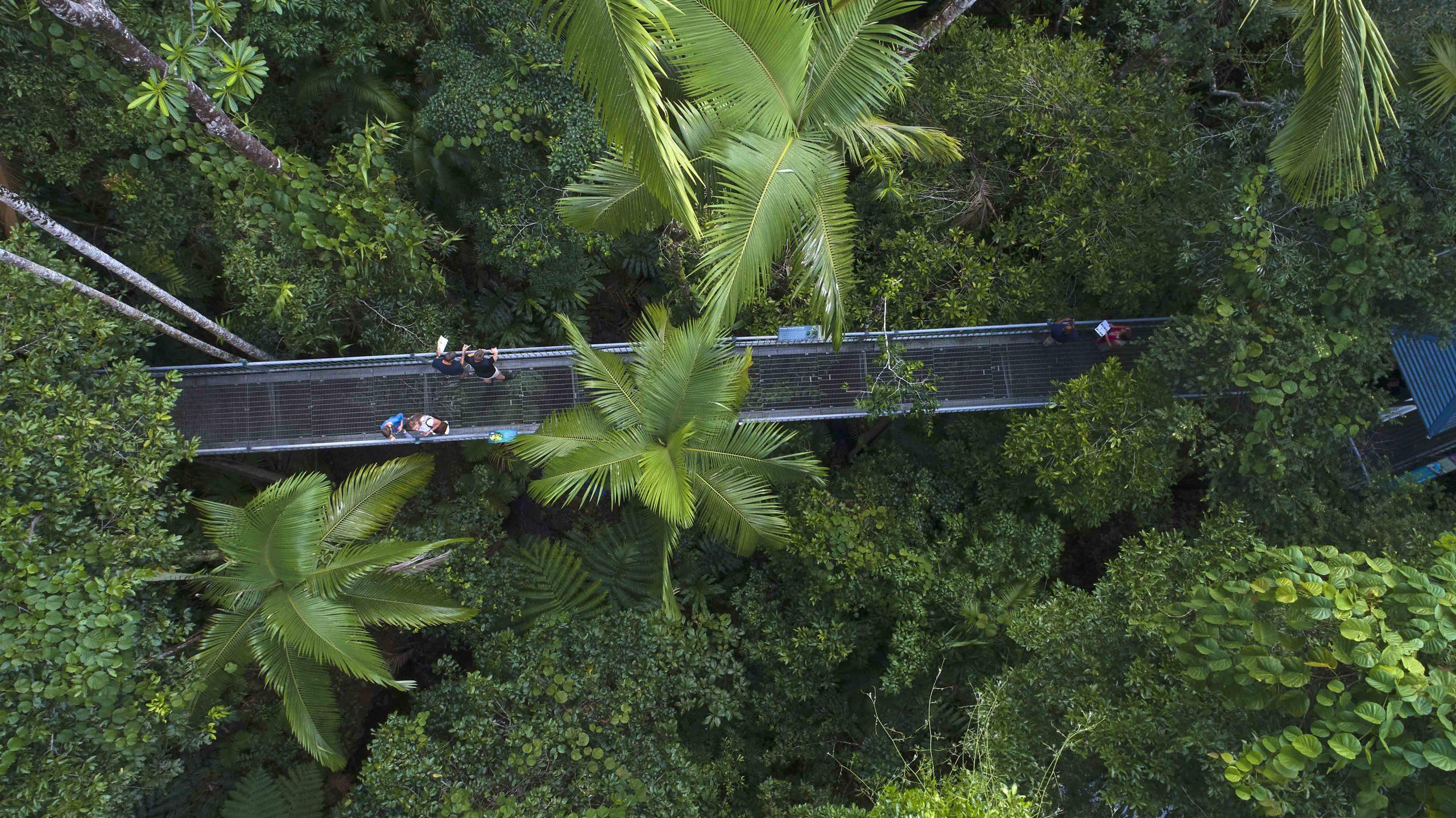×
×

Often we see a gigantic female wandering along the creek in search of fallen fruit, and our ‘resident’ male with a clutch of chicks in tow.
During April to June, in the Daintree Rainforest, most male cassowaries evict their young and the juveniles start fending for themselves. Cassowaries are territorial and the juveniles’ survival depends on establishing a ‘home range’ of their own. This is a gradual process of acquisition by increments. Most juveniles are familiar with the parent’s routine and you will often spot a newly evicted bird shadowing an adult or sneaking into a popular feeding ground just before the parent arrives.
As the courting period nears, the adults become intolerant of juveniles so keeping out of their parents’ way is a strategy adopted to avoid unnecessary conflict.
It can be difficult to tell the sex of a cassowary as their colouration is identical. Courtship is one of the few times the difference is obvious – the females being markedly larger than the males. Otherwise, it’s when you see an adult with young – the males incubate the eggs and raise the young.
It is generally accepted the father will raise the young for 6-9 months, but it can be longer. At the Discovery Centre we observed the ‘resident’ male looking after his three chicks for nearly 15 months. We could often see them from the Coffee Shop deck.
When very young, the chicks would constantly whistle to stay in close contact, and panic if they lost sight of the group. As they matured you could see them become more adventurous; no longer hurrying to catch up with Dad each time he moved away, but pausing to drink from the creek or to take a quick dip.
I remember when a chick became separated from the group, the distressed father kept calling out and marching back and forth until the wayward chick stumbled over the rise, to be safely reunited with Dad and siblings.
It amazes me that the male cassowary can suddenly change from this careful, caring parent to become cantankerous once the breeding season approaches. You can imagine how very proud we were when our ‘resident Dad’ skipped one whole breeding cycle in order to care for his chicks into their second year.
Although it is not unknown for chicks to stay with their father up to 20 months, it is unusual. There are often practical explanations – the fruiting season may have been poor and the chicks’ development was slower than normal; the adult male may have been inexperienced; or he may not have found a suitable breeding female.
There is so much that is not understood about these magnificent birds and I am continually reminding people that there is a whole world of information out there waiting to be gathered. Despite a wealth of scientific data, the Daintree Rainforest still holds most of its ancient secrets.

Daintree Discovery Centre manager Abi Ralph said the team had been busy over the Covid closure period designing and working with experts to better tell the story of the rainforest and its inhabitants and of Gondwana’s ancient legacy.
“We are thrilled with our cool new signage and are sure our visitors will appreciate it too. It provides a more immersive and engaging experience with succinct and easily understood facts and interesting information,” Ms Ralph said.
“Wonderful interactive signage has been installed along the Aerial Walkway, the Canopy Tower and the Jurassic Forest exhibit. They include colour-coded spinning totems that focus on local mammals and canopy birds. These are hands-on information stations designed to appeal to our younger visitors.
“Our dinosaur Jurassic Forest, has also been updated with 3D effects, sound, sliders and a spinning globe.
“We are delighted that the improvements have been completed and the Centre is back to operating as normal, ready to welcome visitors wishing to experience and understand the Daintree Rainforest and how it works.”

Brian Arnold, group general manager of Aboriginal Development Benefits Trust, which owns Daintree Discovery Centre, said continued investment helped to keep the product experience fresh and maintain the Centre’s position as a must-do activity for visitors crossing the Daintree River.
“Daintree Discovery Centre is recognised as a leader in ecotourism and environmental conservation and maintaining that role is a keen focus of our investment activity, particularly in these difficult times,” Mr Arnold said.
For Daintree Discovery Centre opening times, visit www.discoverthedaintree.com.